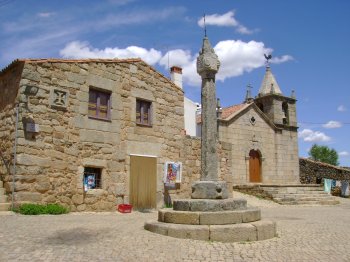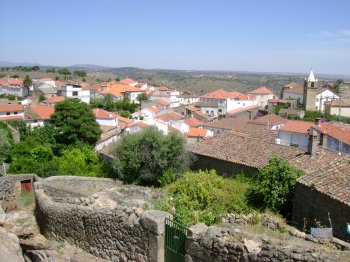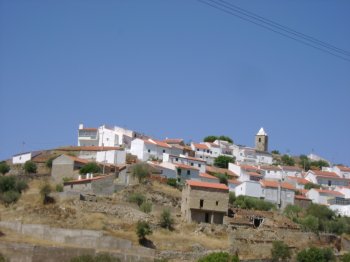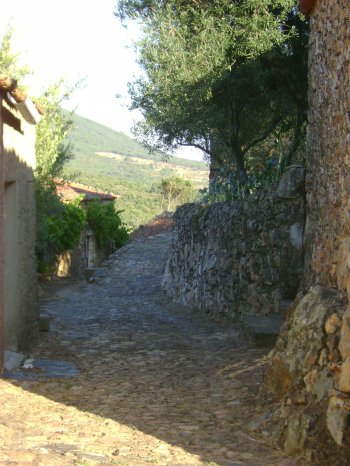Explore the best places
Villages in Idanha-a-Nova
Monsanto
- country
- heritage
Monsanto
6060, Idanha-a-Nova
Small village located on the slopes of Cabeço de Monsanto, at an altitude of 758 meters, known as "the most Portuguese village in Portugal". Rustic nature and human construction unite in a harmonious combination, looking, from a distance, like a stone fortress. The houses are "invaded" by huge granite boulders that serve as floor, wall or roof. Inhabited by military origins, it was here that, according to legend, Viriato withstood a seven-year siege. Monsanto Castle was reconquered from the Arabs.

Idanha-a-Velha
- country
- heritage
Idanha-a-Velha
6060, Idanha-a-Nova
Located on th right bank of the Pônsul river, it is one of the oldest locations in Portugal. It may have once been the imposing town of Egitânia (visigoth period). But even before that, the lusitans and the romans lived there (Civitas Igaeditanorum, a city of the 1st century bC). The morrish invasion of Idanha-a-Velha destroyed a large portion of the vestiges from previous civilizations. There still remain, nonetheless, some monuments that date back to the roman period (a part of the walls, a semi-cylinder shaped tower, etc.).

Idanha-a-Nova
- country
- heritage
Idanha-a-Nova
6060, Idanha-a-Nova
Located on a foothill, above a wide plain, Idanha-a-Nova still has an archaic aspect. The buildings show vestiges of the 16th and 18th centuries and there are still some elements left of the old medieval walls. The abundace of clay underground made it a pottery centre. Vestiges of the castle, whose construction was ordered by Gualdim Paes, and several churches and manors, namely the House of the Marquis of Graciosa and that of the Count of Idanha-a-Nova stand out. The sanctuary of Our Lady of Almortão and the Ponsul dam are located nearby.

Segura
- country
- heritage
Segura
6060, Idanha-a-Nova
This borderline village is located on a granite area surrounded by vines, orchards and woods, on the right bank of the Erges river. The steep, narrow streets hide ancient vestiges, such as the old fortress (probably a roman watchtower recovered by the first dinasty) or the roman bridge (with five arches and 92 metres). It was once the siege of the parish, as may be seen by its manuelin pillory. Nonetheless, the parish was extinct in 1836 and later became a part of Idanha-a-Nova. Other interesting spots: the mother church, the chapels (Saint Marinha, Saint Pedro and Saint Sebastião), the …

Penha Garcia
- country
- heritage
Penha Garcia
6060, Idanha-a-Nova
On the right bank of the Ponsul river, on the south side of the Penha Garcia Mountain foothill, this village, with the same name as the mountain, is known for the many fossils found there (trilobites). Penha Garcia must have once been a lusitan castro (a celtic village). Of th four churchs that once existed here only the church of the Espírito Santo (16th century) is still used as such. Two other churches were ruined but were recovered (Saint Lourenço and Saint Sebastião). The 16th century mother church has a gothic image of Our Lady of Leite (milk). A special …
